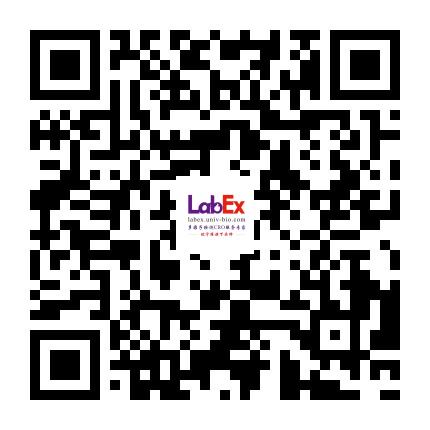A primary neural cell culture model to study neuron, astrocyte, and microglia interactions in neuroinflammation
Astrocyte; In vitro model; Microglia; Neuroinflammation; Neuron; Primary cell culture.- J Neuroinflammation
- 9.3
- 2020 May 11;17(1):155.
- Rat
- 抗体芯片
- 神经系统
- 神经系统
- 其它细胞
- 神经炎症
- CCL2/JE/MCP-1,G-CSF,MAG/Siglec-4a,CCL3/CCL4/MIP-1α/β,GDF-15,MMP-2,CCL5/RANTES,GM-CSF,MMP-3,CCL11/Eotaxin,Hepassocin,MMP-9,CCL17/TARC,HGF,Neprilysin/CD10,CCL20/MIP-3α,ICAM-1/CD54,NOV/CCN3,CCL21/6Ckine,IFN-γ,NT-3,CCL22/MDC,IGF-I,NT-4,Clusterin,IGFBP-2,Osteopontin (OPN),CNTF,IGFBP-3,Osteoprotegerin/TNFRSF11B,CX3CL1/Fractalkine,IGFBP-5,PDGF-BB,CXCL2/GROβ/MIP-2/CINC-3,IGFBP-6,Pref-1/DLK1/FA1,CXCL7/Thymus Chemokine-1,IL-1α/IL-1F1,Prolactin,Cyr61/CCN1,IL-1β/IL-1F2,RAGE,Cystatin C,IL-1ra/IL-1F3,RBP4,DPPIV/CD26,IL-2,Resistin,EGF,IL-3,RGM-A,EG-VEGF,IL-4,SCF,Endostatin,IL-6,Serpin E1/PAI-1,Fetuin A,IL-13,TIM-1/KIM-1/HAVCR,FGF acidic,IL-17A,TNF-α,FGF-7,IL-22,TWEAK/TNFSF12,FGF-21,Jagged 1,VCAM-1/CD106,Fibulin 3,LIF,VEGF,Flt-3 Ligand,Lipocalin-2/NGAL,WISP-1/CCN,Galectin-1
相关货号
LXAR076-1
Abstract
Background:Interactions between neurons, astrocytes, and microglia critically influence neuroinflammatory responses to insult in the central nervous system. In vitro astrocyte and microglia cultures are powerful tools to study specific molecular pathways involved in neuroinflammation; however, in order to better understand the influence of cellular crosstalk on neuroinflammation, new multicellular culture models are required. Methods:Primary cortical cells taken from neonatal rats were cultured in a serum-free "tri-culture" medium formulated to support neurons, astrocytes, and microglia, or a "co-culture" medium formulated to support only neurons and astrocytes. Caspase 3/7 activity and morphological changes were used to quantify the response of the two culture types to different neuroinflammatory stimuli mimicking sterile bacterial infection (lipopolysaccharide (LPS) exposure), mechanical injury (scratch), and seizure activity (glutamate-induced excitotoxicity). The secreted cytokine profile of control and LPS-exposed co- and tri-cultures were also compared. Results:The tri-culture maintained a physiologically relevant representation of neurons, astrocytes, and microglia for 14 days in vitro, while the co-cultures maintained a similar population of neurons and astrocytes, but lacked microglia. The continuous presence of microglia did not negatively impact the overall health of the neurons in the tri-culture, which showed reduced caspase 3/7 activity and similar neurite outgrowth as the co-cultures, along with an increase in the microglia-secreted neurotrophic factor IGF-1 and a significantly reduced concentration of CX3CL1 in the conditioned media. LPS-exposed tri-cultures showed significant astrocyte hypertrophy, increase in caspase 3/7 activity, and the secretion of a number of pro-inflammatory cytokines (e.g., TNF, IL-1α, IL-1β, and IL-6), none of which were observed in LPS-exposed co-cultures. Following mechanical trauma, the tri-culture showed increased caspase 3/7 activity, as compared to the co-culture, along with increased astrocyte migration towards the source of injury. Finally, the microglia in the tri-culture played a significant neuroprotective role during glutamate-induced excitotoxicity, with significantly reduced neuron loss and astrocyte hypertrophy in the tri-culture. Conclusions:The tri-culture consisting of neurons, astrocytes, and microglia more faithfully mimics in vivo neuroinflammatory responses than standard mono- and co-cultures. This tri-culture can be a useful tool to study neuroinflammation in vitro with improved accuracy in predicting in vivo neuroinflammatory phenomena.Keywords:Astrocyte; In vitro model; Microglia; Neuroinflammation; Neuron; Primary cell culture.
金课堂之文献解析 文献原文请点击
本网站销售的所有产品及服务均不得用于人类或动物之临床诊断或治疗,仅可用于工业或者科研等非医疗目的。







 沪公网安备31011502400759号
沪公网安备31011502400759号
 营业执照(三证合一)
营业执照(三证合一)


